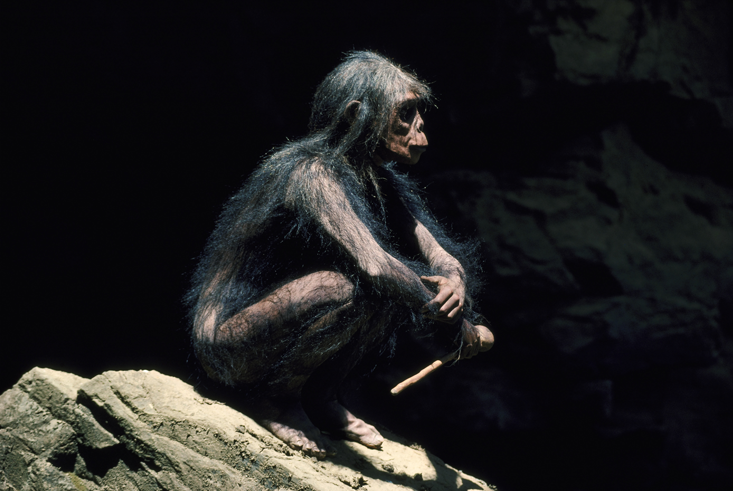In April 1997, at the snooker world championship held at the Crucible Theatre in Sheffield, Ronnie O’Sullivan stepped up to the table to play a frame in what was expected to be a routine victory in his first-round match against Mick Price. What happened in the next 5 minutes and 20 seconds sent shock waves through the world of snooker and ripples of respect through the wider world of professional sport. To the uninitiated, there is a sequence of 36 balls that must be potted in order to achieve the highest score possible in a frame: 147—what aficionados call a “maximum break.” Up until 1997, this had been achieved in official competition snooker on a handful of occasions, in a sport that had effectively turned professional in the late 1960s. It was only a matter of time before the gifted O’Sullivan scored his first competition 147, but it was the manner in which he did it that created such a stir. As he glided around the table he played with a pace and confidence that belied his 21 years. A man at one with the stick in his hands and in a trancelike engagement with his art, he was demonstrably thinking four or five shots ahead and, in playing with such fluidity of movement, O’Sullivan had found a new zone within which the game could be played.
It may seem crude, but to put the achievement into context, it can be compared on pure financial terms with other sports. For a frame that lasted a mere 320 seconds, O’Sullivan was awarded bonus prize money of £165,000. Few can brag that they’ve ever earned £515.63 per second for the work they do—especially at such a tender age. At its most basic, he makes his money with a length of polished wood and a lump of chalk. For many people, earnings aside, O’Sullivan’s feat ranks among the very best sporting achievements in the world. But for me, it’s a celebration of mankind’s perfection at stick usage: a poetically beautiful combination of craft, genius, nerve, and swagger.

Sticks are probably where the story of craft begins—the point at which our very distant ancestors progressed from animalistic existences to lives materially enhanced by the objects around them. The transition is most notoriously depicted in the “Dawn of Man” sequence in Stanley Kubrick’s 2001: A Space Odyssey when, in a moment of epiphany, an ape holds aloft the bone he has just used to pulverize to death the leader of a rival tribe before casting it up into the sky. It’s unfortunate that my example of humankind’s breakthrough moment in the evolution toward tool use occurred in such violent consequences. Kubrick’s objective was undoubtedly to comment on what drives technological change, and how using sticks to fight each other was instrumental in the development of human societies. But I suspect they played a more mundane role in our evolutionary journey before they were systematically used for brutalizing fellow members of the species. Even with the orchestral soundtrack provided by the climactic opening bars of Richard Strauss’s “Also sprach Zarathustra” the sequence would have lacked a certain potency if Kubrick’s ape had used a stick to knock an apple off a tree. Whichever way you choose to depict this defining moment in the human story, the successful use of a stick in those primeval times would undoubtedly have brought fame and fortune.
Over 3 million years on, that rule still applies today in many cultural circumstances. Technically speaking, snooker belongs to the world of sport not craft. But looking at sport as an extension of the physical prowess it took to compete—and to be the best—then I have no issue with extending the notion of craft to the work of sportspeople—especially those who employ sticks. Tennis players, cricketers, snooker players, and golfers, to name just a few practitioners, all wield sticks-of-sorts in a skillful way. And so we arrive back at Ronnie O’Sullivan and a trajectory of hominid stick usage that takes us from its perceived beginnings, as imagined through Kubrick’s ape, to its zenith, the Crucible Theatre, Sheffield, April 1997, and the fastest maximum break in history.
Yet Kubrick could just as well have substituted the bone with a stone, and in doing so may well have been more accurate in his portrayal of seminal tool adoption. While stones and bones survive in the archaeological record of early prehistory, it’s hard to know, unless there are obvious diagnostic signs of wear or modification, if a bone has been used for adapted purposes. Wooden sticks present an even more challenging situation by virtue of the fact that, unless suspended in the extreme environmental conditions of desiccation or saturation, they decompose and turn to dust. Stones, on the other hand, survive the ravages of time and make it abundantly clear to us when they have been refashioned or altered by the human hand. Thus they provide the earliest evidence for the human use of tools and have come to define the way we understand the development of human societies from around 3 to 4 million years ago until at least the Bronze Age (circa 2500–800 B.C.).
That seminal moment of creating a weapon or tool is a crucial coming together. It is an event that signals a new dawn in human technical advancement.
The byword in archaeology for stones is “-lith,” ultimately deriving from the Greek λίθος, meaning “stone.” It is on the basis of a stone-tool typology that we have been able to establish a chronology for the Stone Age. From the Palaeolithic (the “old” Stone Age) through the Mesolithic (“middle”) to the Neolithic (“new”), stone tools become progressively more complex. It’s a story that begins around 3 million years ago at a place called Olduvai Gorge on the Serengeti Plains of Tanzania, and includes the work of the British-Kenyan palaeoanthropologists and archaeologists Mary and Louis Leakey and their excavations in the 1950s. Here skeletal remains of Australopithecus, an early apelike hominid, were recovered, alongside associated assemblages of worked stone. These early tools are usually labeled pebble or cobble tools because they appear to have been struck only enough times to create a single sharp edge. So these early tools were really very basic. Yet for Australopithecus, whose diet comprised scavenged meat, they were undoubtedly a step up from pulling apart a carcass with their bare hands, and allowed for the scoring of the hide, severing flesh, and the breaking and crushing of bones to release marrow. This small but significant step would lead to increased protein consumption and thus had a long-term evolutionary impact.
Then, around 1.9 million years ago, Homo habilis arrives on the archaeological scene, shortly followed, at around 1.2 million years ago, by Homo erectus. We now start to talk of hominins—members of the human clade—defined against the wider classification of hominid, which contained more apelike members of the genus, such as Australopithecus africanus. We tend to call the worked flints from this period Acheulean, after an archaeological site located at St. Acheul on the outskirts of Amiens, northern France. Here, in the 19th century, a number of what were termed hand axes were recovered from the gravel river terraces of the Somme region. In some ways, it was at this point that the Stone Age was born, as the incontrovertible evidence of stones that had been altered by human endeavor, associated with geological deposits of known age, forced a reconsideration of the traditional biblical narrative of how we were created.
Acheulean hand axes are beautiful artifacts to behold. For my first ever lecture on archaeological illustration at the Institute of Archaeology in London I had to make a technical drawing of one of these axes. As I turned it over in my hands I marveled at its epic journey through time. These beautifully worked flints show obvious signs of repeated striking to work a core down to a finished axe that has sharp edges on two sides converging on a tip, but with a “hold” at its base or distal end. What is so mesmerizing about them is that, written into their fracture lines, one can see the consciously made decisions and the cognitive processes of design as the lower Palaeolithic knapper conceived the desired shape and form. Here was something truly “human.” The term hand axe is, however, probably a bit of a misnomer.
On an experimental trip to the dense woodlands of the Sussex Weald in the late 1990s, a few friends and I decided to see if we could fell a tree with crudely made versions of our own. Proponents of the original Palaeolithic Acheulean school would have undoubtedly winced at the standard of our replications, hurriedly knocked out in the back garden of a terraced house in Haringey one hot summer day, before catching the train down to Sussex. But ours certainly had sharp edges, and some very willing experimental archaeologists happy to spend a weekend hacking the trunk of a tree with them. In truth, the endeavor lasted little more than a few hours. Our arms and wrists quickly tired, joints started to seize and swell, and regularly swapping hands only served to spread the agony. So traumatized were the bones and muscles in our wrists that we could barely lift the consolatory pints to our lips at the local country pub that evening. Sucking ale through brightly colored straws, we all concluded that we should probably view the hand axe as an Acheulean Swiss Army Knife or Leatherman, a kind of multi-purpose tool. We are now encouraged by the experts to envisage hand axes as having a range of functions, including basic butchery, breaking, chopping, scraping, crushing, and digging, as well as being a form of currency.
The end of the Acheulean industry broadly overlaps with the emergence of Homo neanderthalensis and Homo sapiens between 100,000 and 125,000 years ago. With this ushering in of the middle Palaeolithic comes a much more developed attitude toward tool production and an increased sophistication in terms of social order. While artistic and symbolic representations were perhaps beyond their consciousness, their burial practices and other rituals are evidence of a capacity for abstract thought and a degree of self-awareness. Stone tools of this period are often referred to as Mousterian, after the type site of Le Moustier in the Dordogne where some of the earliest most complete assemblages were found. Hand axes continued to be standard fare, but the period is also characterized by what we call “scrapers”—small hand-held flints around the blunt side of which the index finger is wrapped to create an effective cutting tool. These scrapers were almost certainly used in the preparation of hides, and the remarkable resilience of both neanderthalensis and sapiens in the face of climatic variation suggests that more sophisticated protective clothing was being produced.
Despite this, Homo neanderthalensis is thought to have died out at around 40,000 B.C., at the beginning of what was an extremely cold period for Europe. From here on, from the upper Palaeolithic into the Mesolithic, stone tool manufacture is characterized by much variation, innovation, and rapid development. Not only were the stone tools more sophisticated but they were also used to create bone tools such as awls and needles. Both suggest further developments in clothing and the likelihood that composite garments were stitched together for a tighter and more ergonomic fit. I often say to friends in the bespoke tailoring trade that it is to Homo sapiens of the upper Palaeolithic that their craft owes its greatest debt. Without those needles and custom-fit lines we might never as a species have survived that cold snap.
Over the last couple of years I’ve given in to an urge; I have started making sticks.
In the stone tool record local traditions are also evident, a sure sign that Homo sapiens had the capacity to adapt production to local environmental conditions. We can almost start to talk of “cultures” because of the variation in what are termed blade flakes—tools made from the flakes knocked from the core. It seems surprising that it took so long to work out that the bits flying off the core were as sharp as the core itself. Back in our garden in Haringey it took a matter of minutes before barefoot flatmates found just how sharp a casual scattering of waste flints—or “debitage” as it’s technically known—could be. But the innovation wasn’t that tools were being made from off-cast flint but rather that the core was prepared in this way in order to purposely produce blade flakes from it. It’s also obvious from analysis of the flakes, cores, platforms, and what we call the “bulb of percussion” that a whole range of fabrication techniques was being used. Indirect percussion (rather like the method of hammer and chisel), pressure flaking, and soft-hammer percussion (with an antler, for example) all allowed the upper Palaeolithic knapper to create a vast variety of stone tools that supported a very sophisticated relationship with the natural world. If this short history has captured your imagination then I advise booking yourself onto an introductory flint-knapping course. It’s easy to become lost in the immersive world of smacking stone on stone; it’s an enormously therapeutic pastime, and one that allows you to connect with the innate Homo sapiens in yourself. There truly is no more authentic way of getting back to basics.
The key technological development in this period is the evidence for hafting—the fixing of a spearhead or arrowhead onto the end of a stick. The evidence comes not from the excavation of complete weapons—wooden shafts with blades attached—but from the shape of the worked flints and the presence of side and corner notches at their base. These indentations cut into the flints would provide purchase for a length of cord used to bind the blade to the stick. There has been a long-standing debate as to whether, as early as the Mousterian industry, projectile points were hafted, but recently excavations at Kathu Pan in South Africa have recovered a number of stone points whose tips exhibit fracture types that indicate impact rather than scraping and sawing. Furthermore, modifications near the base of these points were consistent with hafting. The scientific dating from the site proposes a date range centering around 500,000 years ago. This is an incredible 200,000 years earlier than conventionally thought and forces us to rethink man as hunter rather than hunted at a much earlier period in our evolutionary models. What is certain is that these crude attempts were nowhere near as sophisticated as the projectile points hafted in the Mesolithic, nor those still produced today by cultures in the Amazon rainforests of South America.
Hafting—the technological capacity to attach a stick to a stone—really is the point at which craft becomes cemented as an evolutionary option for the human species. The composite tool or utensil was born, and with it the capacity to make at a much more advanced level than before. That seminal moment of creating a weapon or tool is, in my opinion, a crucial coming together. It is an event that signals a new dawn in human technical advancement—effectively the creation of an extended limb—and one that is certainly well developed by the Mesolithic. Whether it began 500,000 or 300,000 years ago, I’d like to pick up the hafting story in its final days, somewhere in the 1950s, with my grandfather, the former golf-club maker.
Over the last couple of years I’ve given in to an urge; it’s a subliminal longing and a deep genetic inheritance. I have started making sticks. It’s addictive—and evidently in my blood. I blame my grandfather on my father’s side. He passed away when I was only 2, so I never really knew him. He was born, lived, and died in St. Andrews—the home of golf—and he plied his trade in the golf-club-making industry. He was, therefore, a stick maker par excellence and a man of considerable skill. My father recalls how, as a boy, he would watch in awe as his father sat outside at the back of the house turning lengths of hazel, ash, or willow into walking sticks. The scene was to repeat itself a generation later as I watched my own father sitting on the back step, whittling away in the evening sunlight. I can’t remember a time when my dad didn’t have a stick or two on the go, carving intricate figures into the handles and decorative patterns into the shafts. But I never once thought I would find myself in his place, daydreaming while my hands took over the work.

Among the many manual skills required to make a golf club, one of my grandfather’s specialisms was the whipping of the club head and handle to the shaft. It was a relatively simple process but one that was absolutely necessary to get right if the joint between the head and the shaft was not to fracture, open up under duress, and eventually split apart. It involved taking a piece of cord and binding it around the joint as a means of reinforcing it. With one hand, pressure had to be kept on the cord at all times to keep maximum tension while the other hand slowly turned the head of the club to wind the cord on. The job was completed in such a way as to conceal the knot and give it a smooth finish, for appearance’s sake but also so that no trailing cord was left to snag and weaken the bind. Although robbed of an arena within which to use his craft, Grandad passed down to his son the skill of whipping and, in turn, my father has passed it down to me.
I’ve had cause to use this inherited and versatile skill on a number of occasions, most recently in attempting to make a late medieval/early modern fishing rod. In a text called The Treatyse of Fishing with an Angle, dated to the late 15th century, a type of fishing rod made from hazel and a length of horsehair line is described in some detail. Hazel is a wonderful wood for creating fishing rods. Grown in the shade and in wet, humus-rich soil, it can attain dead-straight lengths of 10 to 12 feet while remaining remarkably thin. It’s flexible too, so it can take the strain of the fish as it tries to wriggle free of the hook. Where it falls short is in the weakness of the soft wood at its thinner end. This is prone to snapping under the slightest pressure. Therefore, a small wand of harder wood—such as blackthorn or applewood—needs splicing onto the hazel at a thickness where it’s strong enough to take the joint. The two woods are bound together using the technique of whipping, which can also be used to create a grip on the butt end of the rod. By the time I’d finished, my fishing rod certainly looked the part. Pity then that I had neither the patience nor the skill to fish.
When the machines took over this process we lost a direct and tangible link with our ancient ancestry.
It was on the first occasion I had to use whipping that I realized just how ancient the technique was. I was trying to fasten a flint spearhead, which I’d spent a good two days producing from scratch, onto a shaft of ash that I’d bark-stripped with a flint scraper. I was feeling rather smug, for this was the kind of thing I used to do as a kid with schoolfriends during long hot summers spent in the spinneys, holts, and coppices that border Pevensey Marsh in Sussex. Now, as a student in higher education, with an interest in experimental archaeology, I could dress it up as “research” to justify the hours spent returning to the halcyon days of my youth. I was going for something with an upper Palaeolithic feel; something with which I could burst out from behind a hedge and take down a young caribou—or at least that’s what I imagined.
I experimented with indirect percussion and pressure flaking in the process of making my arrowhead, and used commercial cordage for the whipping. I’d hoped to make my own string from the stems of nettle plants, but was rapidly running out of time—a common problem when trying to cram the Palaeolithic into a three-day weekend. As I sat in the dappled light of the woodland floor, intently concentrating on the binding process, it dawned on me just how far this skill, or technique, had traveled. It had passed through hundreds of thousands of generations, crossed continents, spanned epochs, and fulfilled a multiplicity of functions on its way. And here I was, using it by virtue of the time taken by my father and by his father before him to pass it on. It told a story that was as important to our understanding of humanity as any written history, a tale of ordinary people who relied on such skills for their sustenance. When the machines took over this process in the golf-club-making industry of St Andrews, my grandad lost his livelihood and his source of pride, but we, the wider society, lost a direct and tangible link with our ancient ancestry.
I would love to be able to tell the parallel evolutionary story of stick development since the lower Palaeolithic, for it’s almost inconceivable that Australopithecus, Homo habilis, erectus, neanderthalensis and sapiens did not develop this technology to the same degree of sophistication as they had stone-tool technology. But because of wood’s inability to survive in the archaeological record, it will forever be a story that remains untold and one merely hypothesized by the daydreaming of experimental archaeologists such as myself. Even if we can’t chart the development and diversity of its usage in primitive society, we should at least thank the stick, the stone’s silent sister in the archaeological record, for the part it played in developing the cognitive processes of the human species.
Alexander Langlands is an archaeologist and medieval historian. He is a regular presenter for the BBC and a professor of medieval history at Swansea University.
Reprinted from Cræft: An Inquiry Into the Origins and True Meaning of Traditional Crafts by Alexander Langlands. Copyright © 2017 by Alexander Langlands. With permission of the publisher, W.W. Norton & Company, Inc. All rights reserved.


























